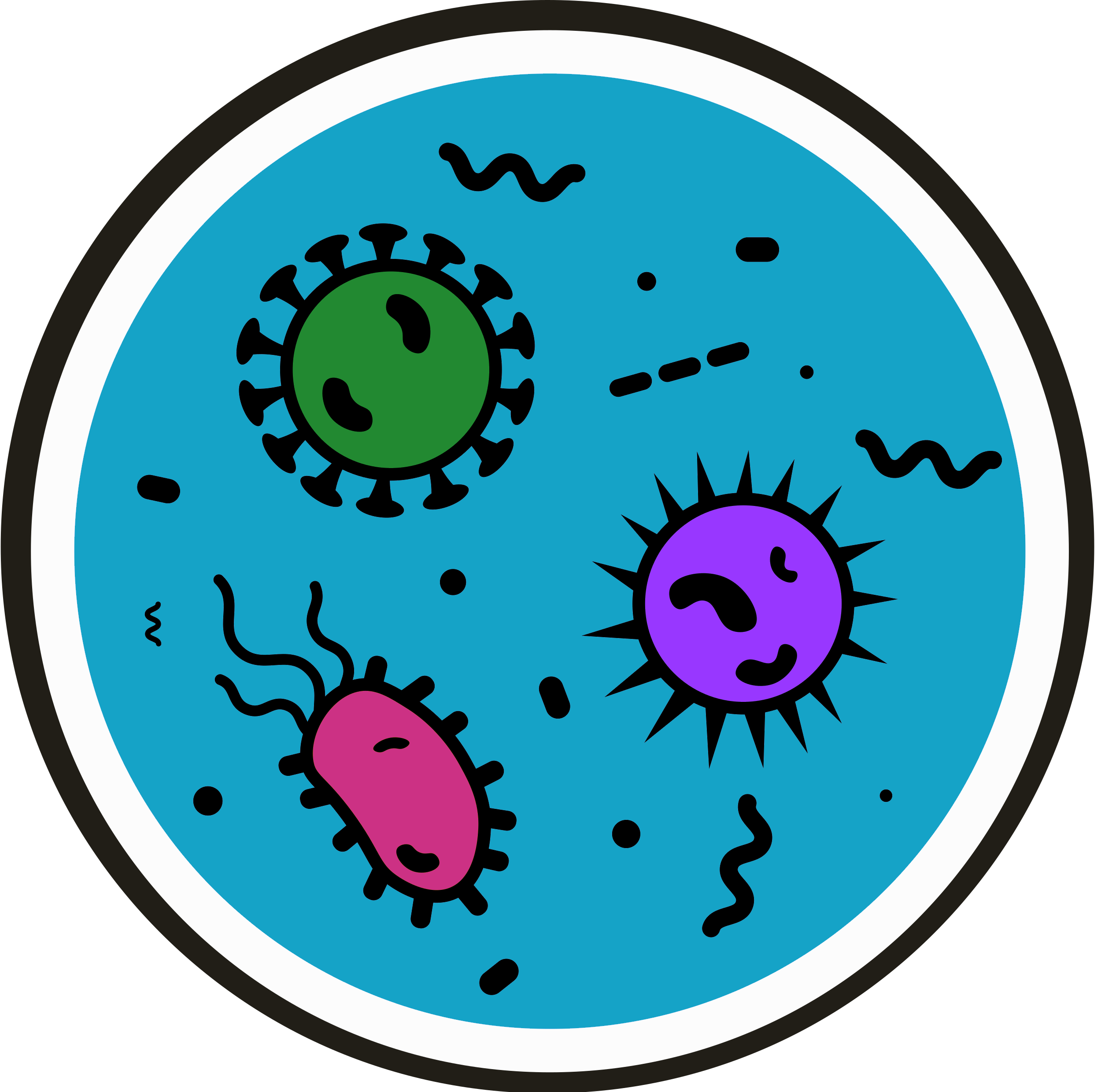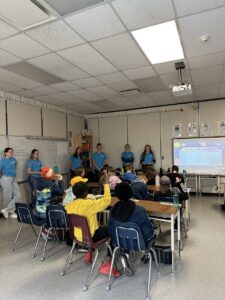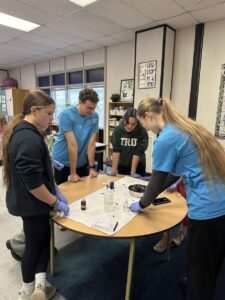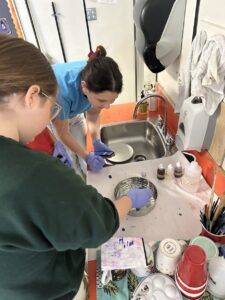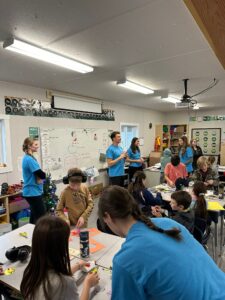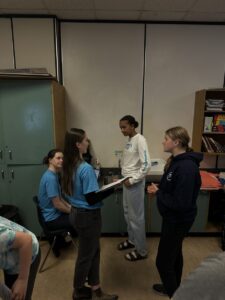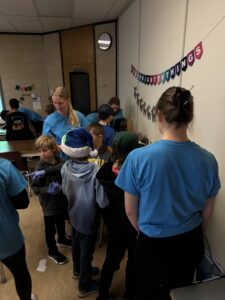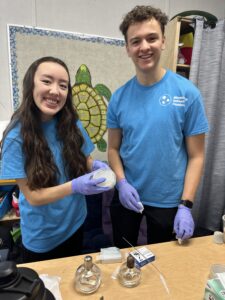Kicking off the Microbiology Outreach Foundation’s new issued programs, the team began their teachings at Aberdeen Elementary with grade 4, 5, 6, and 7 classes who were all eager to learn about the world of microbiology. With the ability to reach a widespread age range, each of the updated programs were able to be introduced to the students, starting with AI Literacy for grades 6 and 7, Bacteria in the Environment for grades 4, 5, and 6, and Gut Microbiome for grades 4 and 5.
The first day of AI Literacy began with an informative presentation on bacteria, explaining the good and the bad, where bacteria can be found and how we all interact with it on a daily basis. This was followed by the first hands-on activity; Gram staining. Through this activity, students were able to decipher whether their bacteria was Gram positive or Gram negative by dyeing their bacteria coated slides and inspecting them under a microscope to see what shape, colour and formation their bacteria took on. The students then wrote down their findings and sketched out the bacteria they saw. Day 2 followed with the introduction of AI. An overview of what AI is and how we can use it was discussed with the MOF members and students. With their sketches, we went on to input their findings into Google Gemini to attempt to recreate the bacteria they saw under the microscope and show students the worth AI can or cannot possess.
“What we’re teaching isn’t well known in terms of biology or science in general and if I could learn about it when I was that young I would have wanted to if I was given the chance.” -Vanessa, Session Leader
“What stood out to me the most was the knowledge that these kids already had about microbiology; they came up with so many little facts and connections on their own.” -Livia, Session Leader
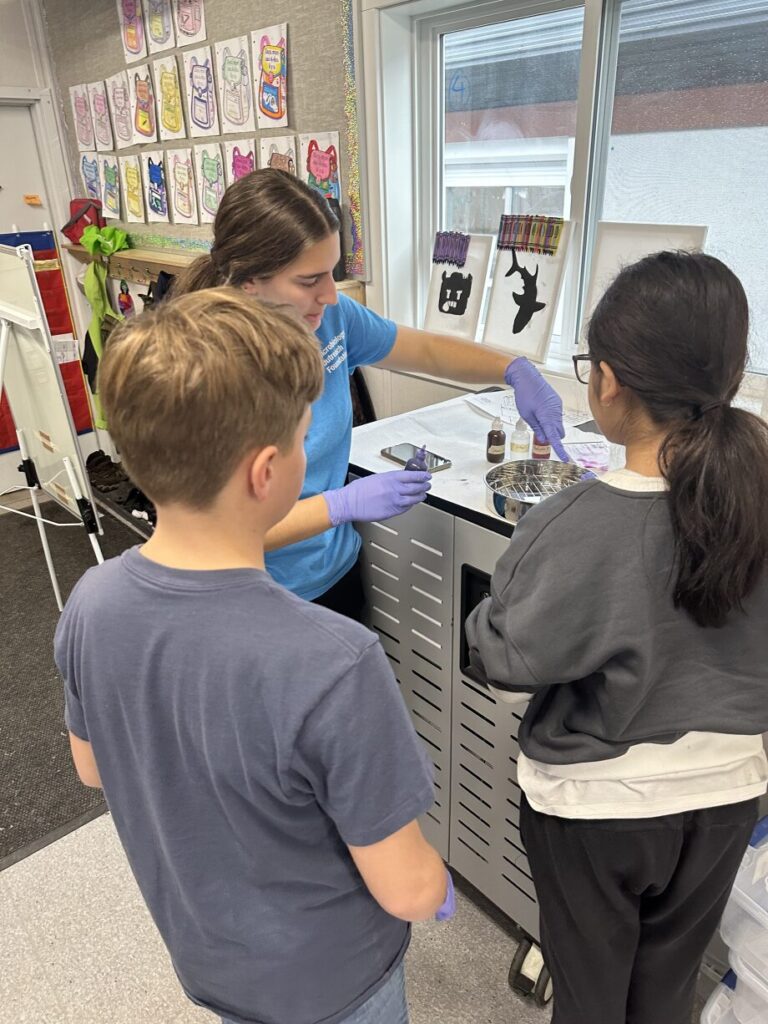
Bacteria in the Environment looked at the different organisms in certain biomes. After an introduction to what biomes are and how organisms can thrive in certain areas, the students broke off into groups with a MOF Leader and discussed the qualities each biome consisted of, i.e. what the temperature is, where it could be located, what animals or bacteria can be found in said biome, etc. This discussion was followed by a riveting arts and craft period. The students were given supplies to create their own bacteria and provide their bacteria with a background description of their name and where their bacteria can be found.
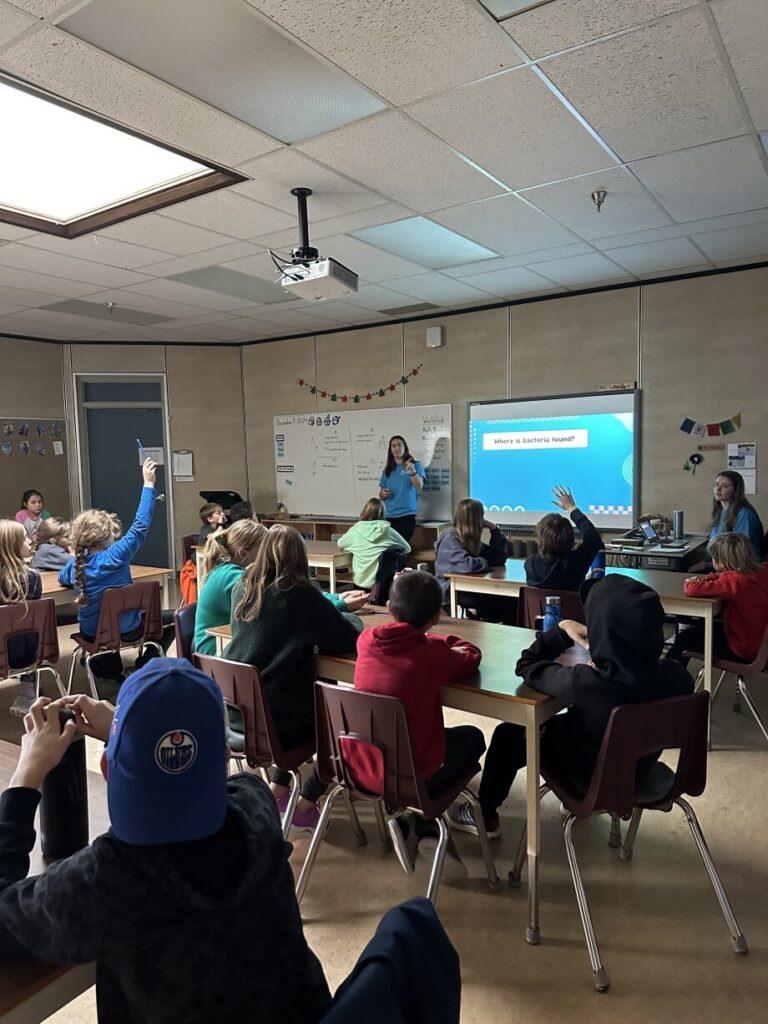
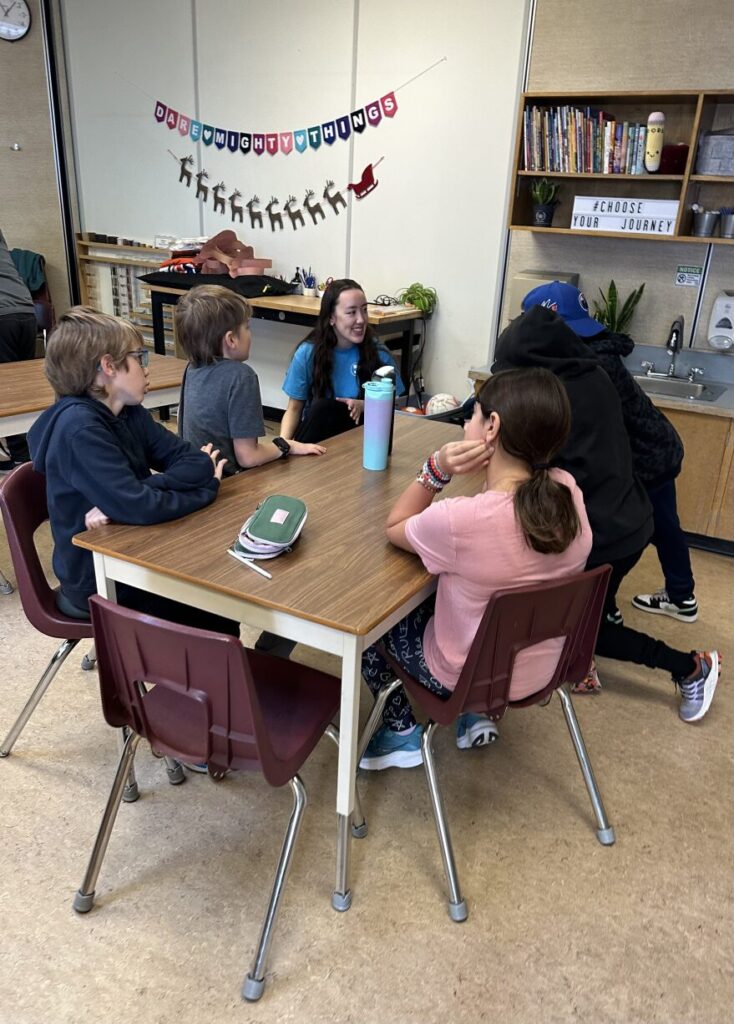
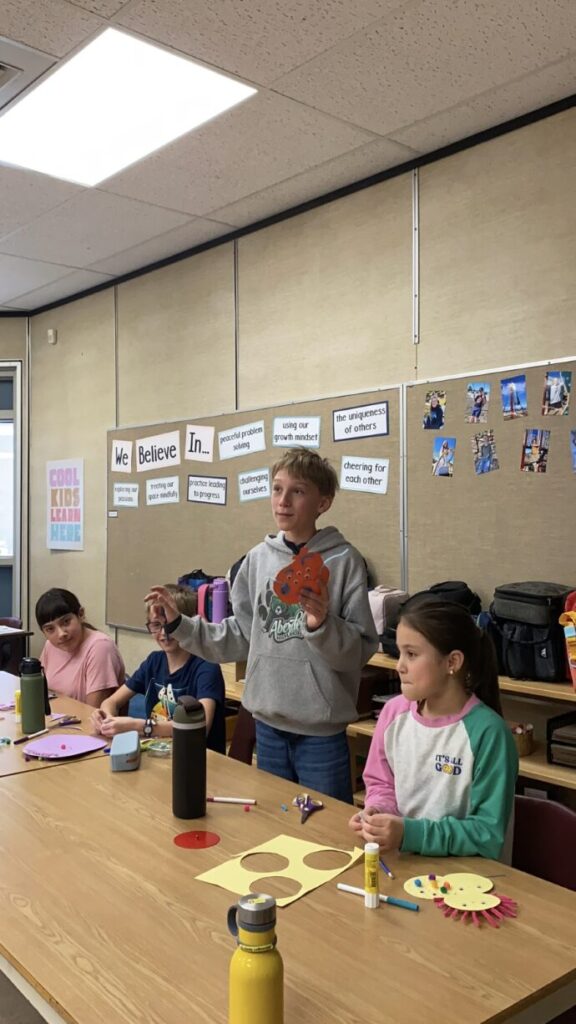
Day 2 followed up with a review on bacteria in biomes and introduced Gram staining to provide better insight into the physical components of bacteria and how it can be seen at a microscopic scale. This allowed the students to see the morphology of bacteria, obtain a deeper understanding of what bacteria truly is and learn about membranes. Once they discovered whether their bacteria was Gram positive or Gram negative, they embarked on a scavenger hunt. Upon learning that membranes are used as sensors, students searched around the classroom in groups; chemotaxis, phototaxis, thermotaxis, and aerotaxis. Each group found elements that pertained to their stimulus, whether that be a type of food, light, temperature, or oxygen. The program finished off by an in-depth wrap up discussion on everything the kids learned and the fun they had while learning about microbiology.

The last program introduced to the grade 4 and 5 class was Gut Microbiome. This program went in depth about microbes and how they interact with our digestive systems. It started off by a discussion of what the students knew about microbes, how they can be harmful as well as helpful, and that they exist everywhere around us. The discussion then moved onto the digestive system and how bacteria contributes to the process as a whole. The idea of fermentation was highlighted as it was noted that fermented foods help enhance gut diversity. To show this in action, students were given supplies to create an experiment with fermentation. This consisted of sugar, yeast, and warm water in a flask with a balloon at the top to simulate sugars being broken down and producing carbon dioxide which would in turn inflate the balloon. Following the experiment, the class as a whole considered what was happening within the experiment and how the balloon was able to inflate, as well as how this can happen in our digestive systems.
Once they understood how bacteria functions in the digestive system, the students were able to create their own bacteria and place them along a hand drawn digestive tract. The students would present their bacteria by giving them a name, placing them anywhere on the system and describing what their functions are within the system.
For review on Day 2, a competitive game of Jeopardy was created to refresh the students minds and keep them interacting with the lesson. Once the idea of bacteria was solidified, the students were able to visualize yeast, acting as bacteria, under the microscope. The lesson was wrapped up by a thoughtful discussion with the students who reflected on what they had learnt throughout the program.
As the sessions continue to progress, the Microbiology Outreach Foundation continues to work on bettering the education of younger generations by offering the program to as many students as possible. Finishing off 2024 with young, brilliant minds has only kept the foundation striving for more and improving the program for all to enjoy. MOF looks forward to seeing what’s to come in 2025!
